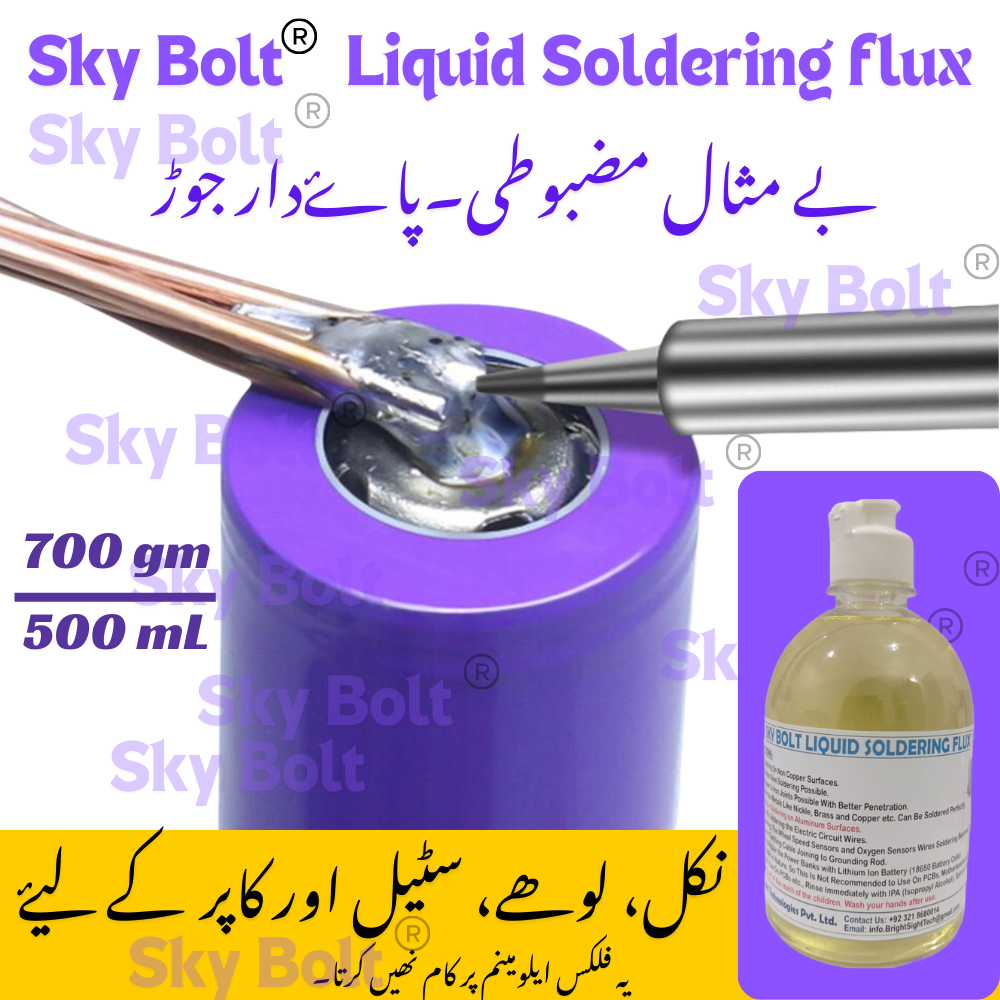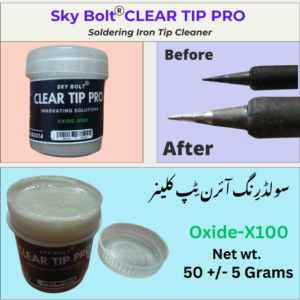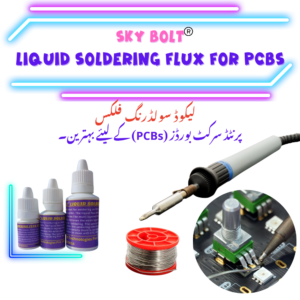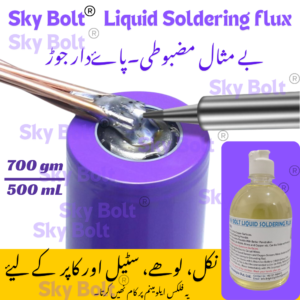Introduction to Liquid Soldering Flux
Liquid soldering flux is a critical component in various soldering applications, serving as a facilitator to enhance the bond between different metals. Composed primarily of organic and inorganic chemicals, liquid flux is utilized to reduce the surface tension at the joint site, thus promoting better wetting and adhesion of the solder material. Its formulation is specifically designed to combat the common issue of oxidation on metal surfaces, which can hinder the soldering process.
The primary purpose of flux in soldering is to clean the surfaces of the metals being joined, ensuring that they are free of contaminants that could obstruct a strong bond. When metals oxidize, they form a layer that can prevent solder from properly adhering, thereby compromising the integrity of the joint. Liquid soldering flux effectively removes this oxidation, allowing for a cleaner and more conductive surface for the solder to flow onto. This is especially pertinent when working with non-copper surfaces, where the potential for oxide layers is often higher, necessitating the use of an effective flux to ensure reliable connections.
In addition to its cleaning properties, liquid flux also plays a pivotal role in the thermal management of the soldering process. It helps in evenly distributing heat across the joint, which is essential for achieving uniform melting of the solder and creating a solid connection. The selection of the appropriate liquid soldering flux is crucial, as not all fluxes are suitable for every type of metal or bonding application. Choosing the right flux can significantly influence the quality and longevity of the solder joint, making it imperative for practitioners to understand the characteristics of different flux types and their specific uses in soldering non-copper surfaces. Careful consideration and application of liquid soldering flux will yield optimal soldering results, enhancing the durability of the connections being made.
Why Liquid Soldering Flux is Ideal for Stainless Steel
Soldering stainless steel poses unique challenges that are not present with more traditional materials like copper. One of the primary issues is the inherent low thermal conductivity of stainless steel, which can make it difficult for solder to flow and bond effectively. Additionally, stainless steel has a protective oxide layer that forms on its surface, creating a barrier that prevents proper adhesion of the solder. Standard soldering techniques often fall short in overcoming these obstacles, leading to weak joints or complete failure in the soldering process.
Liquid soldering flux is specifically designed to address these challenges. Its role is crucial in enhancing the wetting properties of the solder, allowing it to flow more freely across the stainless steel surface. The flux helps to remove the protective oxide layer, ensuring that the solder makes direct contact with the metal, thus facilitating a more effective bond. This is particularly valuable in applications where stainless steel components are used, as achieving strong and durable joints is imperative to ensure longevity and reliability.
Furthermore, liquid soldering flux can function across a range of soldering temperatures, making it versatile for various applications, including electronics, plumbing, and automotive parts. Using this type of flux can improve the overall solder joint quality, leading to enhanced mechanical strength and corrosion resistance. This capability is especially beneficial when soldering stainless steel, as these materials are often subjected to harsh environments. In essence, the application of liquid soldering flux not only simplifies the soldering process but also results in robust and dependable connections that withstand the test of time.
The Role of Liquid Soldering Flux in Bonding Iron and Copper
Liquid soldering flux plays a pivotal role in enhancing the bonding process of iron and copper, materials that are often used in various electronic applications, including uninterruptible power supply (UPS) systems and battery chargers. The unique characteristics of liquid soldering flux facilitate the formation of strong, reliable joints between these two metals, which is essential for the performance and longevity of electronic devices.
One of the primary advantages of using liquid soldering flux is its ability to effectively clean and prepare the surfaces to be joined. Before soldering can occur, any oxides or contaminants present on iron and copper surfaces must be removed to ensure proper adhesion. Liquid soldering flux achieves this by providing a chemical medium that lowers surface tension, allowing the molten solder to flow more freely and uniformly over the surfaces. This enhanced flow leads to better wetting properties, ensuring that the solder thoroughly penetrates between the iron and copper, creating a robust connection.
Furthermore, liquid soldering flux contains various activators that promote the soldering process at lower temperatures. This property is particularly advantageous when joining iron and copper, as it reduces the risk of thermal damage to sensitive components in electronic devices. The ability to solder at lower temperatures without compromising the integrity of the joint is critical in applications where heat sensitivity is a concern. Additionally, the flux helps prevent oxidation during the soldering process, maintaining the quality of the bond and resulting in joints that are resilient under various operational conditions.
In conclusion, liquid soldering flux is integral to effectively bonding iron and copper in electronic applications. Its enhanced cleaning capabilities, low-temperature soldering potential, and oxidation prevention properties make it an invaluable tool in ensuring the reliability of electronic joints.
Soldering Nonferrous Metals with Liquid Soldering Flux
Liquid soldering flux is a crucial component in the soldering process, particularly when dealing with nonferrous metals such as nickel and brass. These metals present unique challenges due to their distinct physical and chemical properties. Effective soldering depends not only on the solder itself but also on the choice and application of the flux. Liquid soldering flux works by cleaning the metal surfaces, preventing oxidation, and improving the flow of solder, which is essential for achieving strong, reliable joints.
Nickel, known for its corrosion resistance and strength, can prove difficult to solder without proper preparation. Using liquid soldering flux specifically formulated for nickel ensures that the solder will adhere effectively. The flux helps in removing any surface oxides that might inhibit solder flow, thus creating a clean, effective bond. It is important to select a flux that is compatible with nickel, as some formulations may not provide the desired results.
Brass, another widely utilized nonferrous metal, also benefits from the use of liquid soldering flux. The primary challenge in soldering brass arises from its copper content, which can oxidize quickly. Applying liquid soldering flux helps to mitigate this issue by providing a protective barrier against oxidation and enhancing the wetting characteristics of the solder. For optimal results when soldering brass, it is advised to apply heat uniformly to avoid overheating and damaging the solder joint.
Overall, the versatility of liquid soldering flux makes it an invaluable resource across various soldering environments. When working with nonferrous metals, it is crucial to consider the specific properties of each metal, as well as the appropriate flux selection and application techniques. Adhering to best practices can yield successful soldering results, ensuring durability and a high-quality finish in your projects.
Conclusion: The Future of Soldering with Liquid Flux
Throughout this blog post, we have explored the significant advantages of employing liquid soldering flux, particularly on non-copper surfaces such as stainless steel and various nonferrous metals. One of the primary benefits of liquid flux is its unique formulation, which enhances adhesion and ensures a reliable bond during the soldering process. This is especially vital when working with challenging materials that are typically prone to oxidation and poor wetting, traits that are common in stainless steel and other metals.
The versatility of liquid soldering flux cannot be overstated. It not only improves the flow of solder but also helps to protect surfaces from contaminants. This characteristic is essential when dealing with metals that may otherwise resist solder adhesion. As soldering technology continues to advance, the developments in liquid flux formulations are likely to lead to even more effective products, making soldering more accessible and reliable across various applications.
Moreover, as industries evolve and more complex assemblies emerge, the role of liquid soldering flux is becoming increasingly prominent. The future of soldering is likely to see innovations that will enhance the effectiveness of these fluxes, offering improved performance in challenging environments. This evolution presents an exciting opportunity for hobbyists and professionals alike to integrate liquid soldering flux into their projects, potentially transforming their approach to soldering tasks.
As a final thought, we encourage you to experiment with liquid soldering flux in your own work. Understand how it interacts with different materials and observe the outcomes. By embracing these advancements, you can elevate your soldering projects, ensuring durability and reliability in your electrical connections. The future of soldering is ripe for exploration, and liquid flux may very well be the key to unlocking new potential.





Reviews
There are no reviews yet.